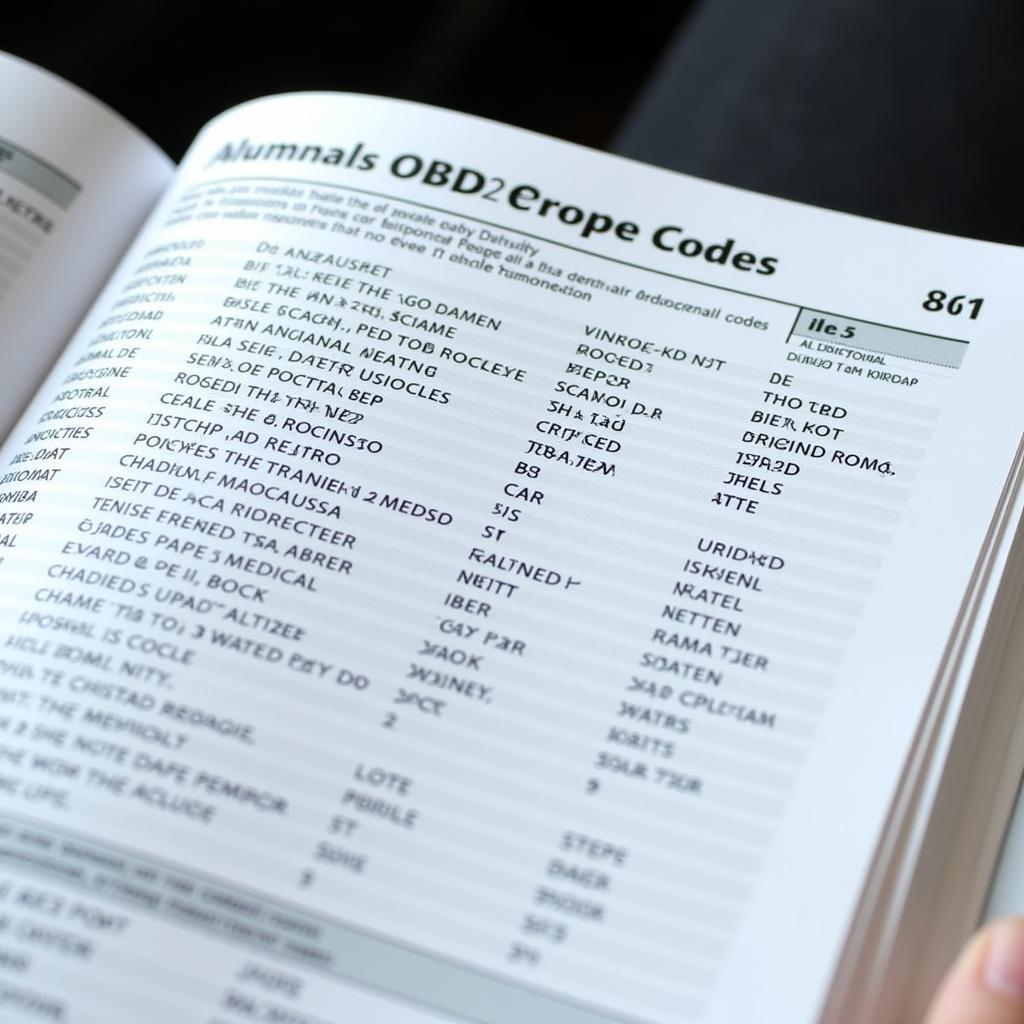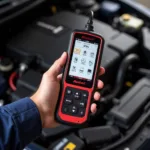Understanding your car’s health just got easier with an OBD2 scanner and a trusty OBD2 code manual. But navigating the world of diagnostic trouble codes (DTCs) can feel like learning a new language. Fear not! This comprehensive guide will empower you to decode those cryptic codes like a pro.
What is an OBD2 Code Manual?
An OBD2 code manual is essentially your Rosetta Stone for understanding those flashing lights on your dashboard. It’s a comprehensive list of standardized OBD2 codes, each representing a specific issue detected by your car’s onboard computer.
Think of your car’s computer like a detective meticulously observing every function. When something seems amiss, it logs a DTC, illuminating your check engine light. The code manual helps you translate these DTCs from technical jargon into plain English, revealing the potential culprit behind that pesky warning light.
Why Do I Need an OBD2 Code Manual?
You might be wondering, “Can’t my mechanic handle this?”. While mechanics have access to advanced diagnostic tools, understanding basic OBD2 codes empowers you to:
- Diagnose car problems early: Catching issues early can save you costly repairs down the line.
- Communicate effectively with mechanics: A basic understanding helps you ask informed questions and understand your mechanic’s recommendations better.
- Save money on minor fixes: Some issues, like a loose gas cap, are easily addressed with the help of a code manual.
How to Use an OBD2 Code Manual: A Step-by-Step Guide
Let’s demystify the process of using an OBD2 code manual.
- Retrieve Your OBD2 Code:
- You’ll need an OBD2 scanner to read the code from your vehicle’s computer.
- Connect the scanner to your car’s OBD2 port, usually located under the dashboard on the driver’s side.
- Turn your car’s ignition to the “on” position without starting the engine.
- Follow the scanner’s instructions to retrieve the DTC.
-
Understand the Code Structure:
- OBD2 codes are typically five-digit alphanumeric sequences.
- The first character is a letter:
- P: Powertrain (engine, transmission, emissions)
- B: Body (airbags, power windows, central locking)
- C: Chassis (ABS, traction control, suspension)
- U: Network & Communication (modules, wiring)
- The second character indicates the code type:
- 0: Standardized (SAE – Society of Automotive Engineers)
- 1: Manufacturer-specific
- The third character points to the affected system (e.g., 1 for Fuel and Air Metering).
- The last two digits pinpoint the specific problem within that system.
-
Consult Your OBD2 Code Manual:
- Locate the section corresponding to the first letter of your code.
- Find the specific code within that section.
- The manual will provide a definition of the code and potential causes for the issue.
-
Interpret the Information:
- Remember, the code doesn’t always directly translate to a specific part failure.
- It often points to a system malfunction, requiring further diagnosis.
- The code manual might suggest possible causes, such as:
- P0420 (Catalyst System Efficiency Below Threshold): Could indicate a faulty catalytic converter, oxygen sensor, or exhaust leak.
- “John Smith, a seasoned mechanic with over 20 years of experience, often reminds car owners, “Don’t jump to conclusions based on a single code. Treat it as a starting point for a thorough investigation.”
-
Take Action:
- Minor issues: If you’re confident in your abilities and the issue seems minor (like a loose gas cap), try addressing it yourself.
- Seek professional help: For complex issues or those requiring specialized tools, consult a qualified mechanic.
Tips for Using an OBD2 Code Manual Effectively
- Choose the Right Manual: Ensure it covers your vehicle’s make, model, and year for accurate information.
- Stay Updated: OBD2 codes are periodically updated. Consider referencing online resources or updating your manual for the latest information.
- Record Your Findings: Note down the codes, their definitions, and any steps you take. This information can be valuable for troubleshooting and future repairs.
- Don’t Ignore Other Symptoms: Use the code as a clue but also consider other symptoms your car might be exhibiting for a comprehensive diagnosis.
Conclusion
Mastering the art of using an OBD2 code manual empowers you to take charge of your car’s health. While it doesn’t replace the expertise of a qualified mechanic, it equips you with the knowledge to understand your car better and make informed decisions. Remember, a well-maintained car translates to safer, smoother, and potentially more affordable driving experiences. So, grab your code manual, embrace your inner mechanic, and unlock the secrets hidden within your car’s computer!


